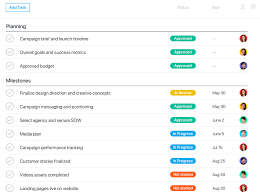Empowering Through Education: Building a Brighter Future
The Power of Education
Education is the key to unlocking opportunities, broadening horizons, and shaping a better future for individuals and societies alike. It is a lifelong journey that empowers individuals with knowledge, skills, and critical thinking abilities that are essential for personal growth and success.
One of the most significant benefits of education is its ability to break the cycle of poverty. By providing individuals with access to quality education, we equip them with the tools they need to secure better job opportunities, improve their earning potential, and ultimately lift themselves out of poverty.
Education also plays a crucial role in fostering social cohesion and promoting equality. When everyone has access to education, regardless of their background or circumstances, we create a more inclusive society where diversity is celebrated and everyone has an equal chance to succeed.
Furthermore, education is a powerful tool for driving innovation and progress. Through education, individuals are encouraged to think creatively, solve complex problems, and push the boundaries of what is possible. This spirit of innovation not only benefits individuals but also drives economic growth and societal development.
At its core, education is about more than just acquiring knowledge; it is about developing critical thinking skills, fostering empathy and understanding, and nurturing a lifelong love for learning. It empowers individuals to question the status quo, challenge assumptions, and contribute meaningfully to their communities.
In conclusion, education is a fundamental human right that has the power to transform lives and societies. By investing in education at all levels – from early childhood development to adult learning – we can build a brighter future for generations to come.
Eight Essential Tips for Enhancing Your Educational Journey
- Set specific goals for your education to stay focused
- Create a study schedule and stick to it for better time management
- Take breaks during study sessions to avoid burnout
- Engage actively in class discussions and ask questions when needed
- Utilise resources such as libraries, online platforms, and tutors for additional support
- Practice good note-taking techniques to enhance retention of information
- Seek feedback on your work to identify areas for improvement
- Stay organised by keeping track of deadlines and assignments
Set specific goals for your education to stay focused
Setting specific goals for your education is a crucial strategy to help you stay focused and motivated on your learning journey. By clearly defining what you want to achieve, whether it’s mastering a new skill, completing a course, or obtaining a qualification, you give yourself a sense of direction and purpose. Specific goals provide you with a roadmap to follow, helping you structure your learning activities and track your progress along the way. With clear objectives in mind, you are more likely to stay committed, overcome challenges, and ultimately succeed in reaching your educational aspirations.
Create a study schedule and stick to it for better time management
Creating a study schedule and adhering to it is a valuable tip for effective time management in education. By setting aside dedicated blocks of time for studying, individuals can establish a routine that helps them stay organised, focused, and on track with their academic responsibilities. Consistency in following a study schedule not only ensures that all subjects and tasks are covered adequately but also cultivates discipline and good study habits, ultimately leading to improved learning outcomes and academic success.
Take breaks during study sessions to avoid burnout
Taking breaks during study sessions is a crucial tip to prevent burnout and maintain productivity. By incorporating regular short breaks into your study routine, you give your brain a chance to rest and recharge, which can improve focus and retention. Stepping away from your study materials for a few minutes allows you to clear your mind, reduce stress, and return with renewed energy and motivation. Remember, it’s not about how long you study but how effectively you do so, and breaks play a vital role in ensuring sustainable learning habits.
Engage actively in class discussions and ask questions when needed
Active engagement in class discussions and the willingness to ask questions when needed are essential components of a fruitful educational experience. By actively participating in discussions, students not only demonstrate their understanding of the material but also contribute to a dynamic learning environment where ideas are exchanged and perspectives are broadened. Asking questions, on the other hand, shows curiosity and a desire to deepen one’s knowledge, leading to a more comprehensive grasp of the subject matter. Both practices foster critical thinking skills, enhance communication abilities, and ultimately enrich the overall learning process for everyone involved.
Utilise resources such as libraries, online platforms, and tutors for additional support
To enhance your educational journey, make use of various resources available to you, including libraries, online platforms, and tutors. Libraries offer a wealth of knowledge in the form of books, journals, and other materials that can complement your learning. Online platforms provide convenient access to a vast array of educational resources, courses, and tutorials to help you deepen your understanding of different subjects. Additionally, working with tutors can offer personalised guidance and support to address specific challenges and improve your academic performance. By utilising these resources effectively, you can enrich your learning experience and achieve greater success in your educational pursuits.
Practice good note-taking techniques to enhance retention of information
Practising good note-taking techniques is a valuable strategy to improve the retention of information in educational settings. By actively engaging with the material, summarising key points, and organising thoughts coherently, students can reinforce their understanding and memory of the subject matter. Effective note-taking not only helps capture important details during lectures or study sessions but also promotes active learning and critical thinking skills. By incorporating structured notes into their study routine, individuals can enhance their ability to recall information, make connections between concepts, and ultimately achieve academic success.
Seek feedback on your work to identify areas for improvement
Seeking feedback on your work is a valuable practice that can help you identify areas for improvement and enhance your learning experience. By actively seeking feedback from teachers, peers, or mentors, you gain valuable insights into your strengths and weaknesses, enabling you to refine your skills and knowledge. Constructive feedback not only highlights areas that need attention but also provides guidance on how to make meaningful improvements. Embracing feedback as a tool for growth fosters a culture of continuous learning and development, ultimately leading to greater success in your educational journey.
Stay organised by keeping track of deadlines and assignments
Staying organised by keeping track of deadlines and assignments is a crucial tip for success in education. By maintaining a structured system to monitor upcoming tasks, students can effectively manage their time, prioritise their workload, and ensure that they meet all academic requirements in a timely manner. This proactive approach not only helps students stay on top of their studies but also cultivates valuable skills such as time management, responsibility, and accountability that are essential for academic achievement and future success.









